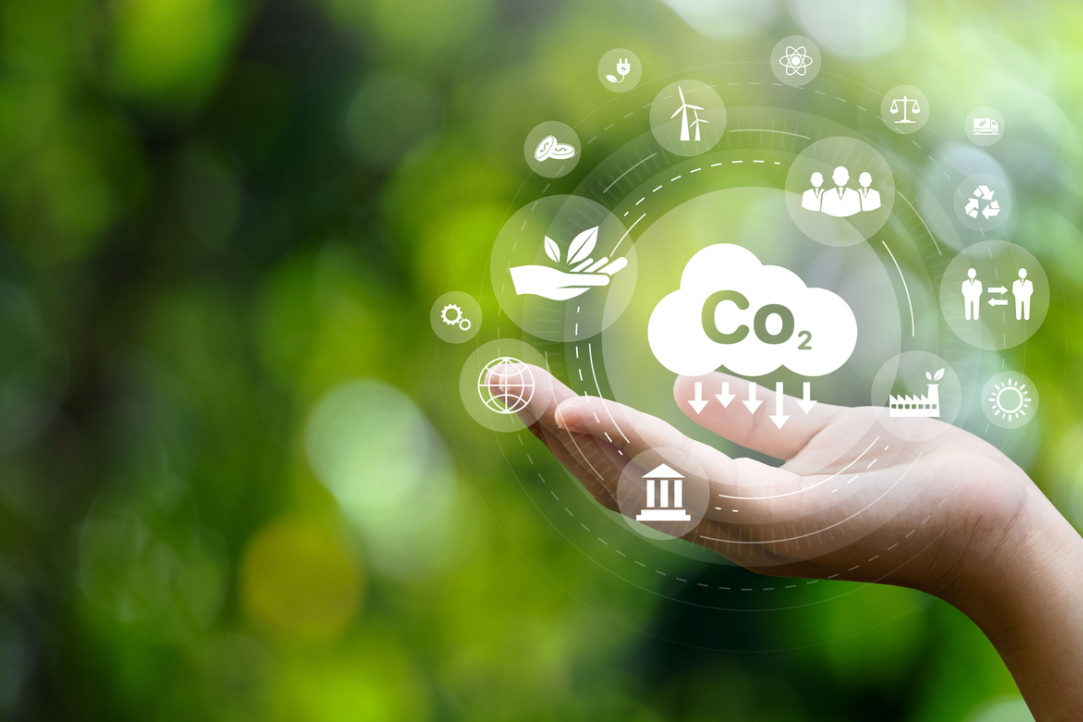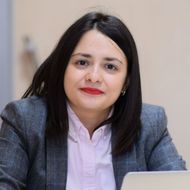Low-Carbon Exports Reduce CO2 Emissions

Researchers at the HSE Faculty of Economic Sciences and the Federal Research Centre of Coal and Coal Chemistry have found that exporting low-carbon goods contributes to a better environment in Russian regions and helps them reduce greenhouse gas emissions. The study results have been published in R-Economy.
Yuri Simachev and Anna Fedyunina from the HSE Faculty of Economic Sciences, in collaboration with Sergey Nikitenko from the Federal Research Centre for Coal and Coal Chemistry, analysed the impact of Russian regions' trade in low-carbon goods (LCGs) on CO₂ emissions. LCGs include solar, wind, and hydrogen energy systems, energy-efficient industrial equipment, electric vehicles, and more.
The researchers analysed data from the Federal Customs Service, Rosstat, and the Central Bank of Russia from 2016 to 2021, examining the structure of international trade, CO₂ emissions across regions, gross regional product (GRP), investments, and other economic development indicators. For the study, the regions were categorised into quantiles based on the volume of low-carbon goods exported and imported.
The greatest volumes of LCG exports were found in regions with advanced industrial development, including the Ural Federal District (3.2% of total exports), the Siberian Federal District (2.1%), and the Southern Federal District (2.2%). The Far Eastern Federal District (1.6%) and the Central Federal District (1.1%) were identified as leading importers of LCGs.
The analysis revealed a nonlinear impact of low-carbon goods trade on CO₂ emissions, forming a U-shaped relationship between trade volume and emission reductions. In the initial stages, increased exports help reduce emissions by introducing innovative technologies and enhancing energy efficiency. However, over time, the trend changes, and emissions decrease at a slower rate.
Regions with low export levels, classified in the first and second quantiles, include the republics of the North Caucasus, the oil-producing regions of the Urals, and southern Russia. In these regions, a 1% increase in LCG exports results in a 0.13–0.19% reduction in CO₂ emissions.
In regions with advanced manufacturing industries, such as the Ulyanovsk and Novgorod regions, Tatarstan, and Bashkortostan, this effect is most pronounced, with each percentage increase in exports associated with a 0.23–0.29% decrease in emissions. Once per capita exports of low-carbon goods in a region exceed approximately 2,500 roubles, the reduction in emissions slows to 0.18%, as seen in Moscow, St Petersburg, and the Sverdlovsk region. The reason is that an excessive volume of LCGs in the export structure leads to market saturation in the long term, while further increases in trade are not matched by equivalent investments in the modernisation of production facilities.
In contrast, LCG imports have little to no effect on emissions. Only in regions with the highest share of LCG imports in trade turnover does a 1% increase in imports lead to a 0.19% reduction in CO₂ emissions.
Thus, the study highlighted significant regional differences that should be considered when developing industrial policies. To optimise the impact of emission reductions, it is essential to encourage the export of low-carbon technology goods in regions with a strong industrial base, promote innovative production, and consider the specific characteristics of the regional economy. The state is already actively supporting this sphere.

Anna Fedyunina
The co-authors have begun analysing measures to regulate international trade in non-carbon technologies, with tariff regulation being the most common approach. They emphasise that in Russia, these measures should consider the country's specific characteristics. 'Russia actively imports technological equipment for the production of low-carbon goods; therefore, trade liberalisation measures are focused on reducing the tax burden on imports. This includes expanding the list of imported equipment exempt from value-added tax. Additionally, Russia's priority is to increase export competitiveness. In this regard, subsidising after-sales services has become the primary tool for supporting exporters,' explains Anna Fedyunina, Assistant Professor at the HSE Faculty of Economic Sciences.
See also:
HSE Scientists Reveal How Disrupted Brain Connectivity Affects Cognitive and Social Behaviour in Children with Autism
An international team of scientists, including researchers from the HSE Centre for Language and Brain, has for the first time studied the connectivity between the brain's sensorimotor and cognitive control networks in children with autism. Using fMRI data, the researchers found that connections within the cognitive control network (responsible for attention and inhibitory control) are weakened, while connections between this network and the sensorimotor network (responsible for movement and sensory processing) are, by contrast, excessively strong. These features manifest as difficulties in social interaction and behavioural regulation in children. The study has been published in Brain Imaging and Behavior.
Similar Comprehension, Different Reading: How Native Language Affects Reading in English as a Second Language
Researchers from the MECO international project, including experts from the HSE Centre for Language and Brain, have developed a tool for analysing data on English text reading by native speakers of more than 19 languages. In a large-scale experiment involving over 1,200 people, researchers recorded participants’ eye movements as they silently read the same English texts and then assessed their level of comprehension. The results showed that even when comprehension levels were the same, the reading process—such as gaze fixations, rereading, and word skipping—varied depending on the reader's native language and their English proficiency. The study has been published in Studies in Second Language Acquisition.
Mortgage and Demography: HSE Scientists Reveal How Mortgage Debt Shapes Family Priorities
Having a mortgage increases the likelihood that a Russian family will plan to have a child within the next three years by 39 percentage points. This is the conclusion of a study by Prof. Elena Vakulenko and doctoral student Rufina Evgrafova from the HSE Faculty of Economic Sciences. The authors emphasise that this effect is most pronounced among women, people under 36, and those without children. The study findings have been published in Voprosy Ekonomiki.
Scientists Discover How Correlated Disorder Boosts Superconductivity
Superconductivity is a unique state of matter in which electric current flows without any energy loss. In materials with defects, it typically emerges at very low temperatures and develops in several stages. An international team of scientists, including physicists from HSE MIEM, has demonstrated that when defects within a material are arranged in a specific pattern rather than randomly, superconductivity can occur at a higher temperature and extend throughout the entire material. This discovery could help develop superconductors that operate without the need for extreme cooling. The study has been published in Physical Review B.
Scientists Develop New Method to Detect Motor Disorders Using 3D Objects
Researchers at HSE University have developed a new methodological approach to studying motor planning and execution. By using 3D-printed objects and an infrared tracking system, they demonstrated that the brain initiates the planning process even before movement begins. This approach may eventually aid in the assessment and treatment of patients with neurodegenerative diseases such as Parkinson’s. The paper has been published in Frontiers in Human Neuroscience.
Civic Identity Helps Russians Maintain Mental Health During Sanctions
Researchers at HSE University have found that identifying with one’s country can support psychological coping during difficult times, particularly when individuals reframe the situation or draw on spiritual and cultural values. Reframing in particular can help alleviate symptoms of depression. The study has been published in Journal of Community Psychology.
Scientists Clarify How the Brain Memorises and Recalls Information
An international team, including scientists from HSE University, has demonstrated for the first time that the anterior and posterior portions of the human hippocampus have distinct roles in associative memory. Using stereo-EEG recordings, the researchers found that the rostral (anterior) portion of the human hippocampus is activated during encoding and object recognition, while the caudal (posterior) portion is involved in associative recall, restoring connections between the object and its context. These findings contribute to our understanding of the structure of human memory and may inform clinical practice. A paper with the study findings has been published in Frontiers in Human Neuroscience.
Researchers Examine Student Care Culture in Small Russian Universities
Researchers from the HSE Institute of Education conducted a sociological study at four small, non-selective universities and revealed, based on 135 interviews, the dual nature of student care at such institutions: a combination of genuine support with continuous supervision, reminiscent of parental care. This study offers the first in-depth look at how formal and informal student care practices are intertwined in the post-Soviet educational context. The study has been published in the British Journal of Sociology of Education.
AI Can Predict Student Academic Performance Based on Social Media Subscriptions
A team of Russian researchers, including scientists from HSE University, used AI to analyse 4,500 students’ subscriptions to VK social media communities. The study found that algorithms can accurately identify both high-performing students and those struggling with their studies. The paper has been published in IEEE Access.
HSE Scientists: Social Cues in News Interfaces Build Online Trust
Researchers from the HSE Laboratory for Cognitive Psychology of Digital Interface Users have discovered how social cues in the design of news websites—such as reader comments, the number of reposts, or the author’s name—can help build user trust. An experiment with 137 volunteers showed that such interface elements make a website appear more trustworthy and persuasive to users, with the strongest cue being links to the media’s social networks. The study's findings have been published in Human-Computer Interaction.


